To my palate, this is the perfect Panna Cotta. It is lightly set and lightly sweetened with a good balance between fat and lean dairy ingredients.
Panna Cotta is a chilled, softly gelled, silky smooth, creamy, melt-in-your-mouth Italian dessert that translates as “cooked cream.” I mentally put it in the pudding and flan category because of its creamy, set quality, but unlike most flans and puddings, it usually contains no eggs (for an interesting exception to this see The Sweet Life: Desserts from Chanterelles by Kate Zuckerman). In consistency, it is somewhere between a flan and lightest possible gelatin. When set, it can be unmolded, in which case it will shimmy seductively on the plate. It’s a little bit of heavenly cool on a spoon.
Typically, Panna Cotta is made by melting softened gelatin in hot liquid, combining with a sweetened dairy product, pouring into molds, and finally chilling to set the gelatin.
Dana of TastingMenu offers a deep look at the chemistry behind this dish in her blog post titled, Perfecting Panna Cotta, which I found most interesting. I appreciate cooks who work to understand the underlying science and then use that knowledge to create dishes that are both unique and inspired.
I agree with Dana that there is no reason to actually “cook” the cream and it may change the texture of the finished dish slightly. You only need to heat enough liquid to melt the gelatin: ½ to 1 cup of very hot liquid to 1 packet of softened powdered gelatin.
I”m also intrigued by her admonition to cool the melted gelatin at room temperature for 1 hour before finishing and refrigerating the panna cotta. Dana says that this process helps to form a tighter, stronger web of protein chains, which enables you to use slightly less gelatin and achieve a soft set that does not become firmer as the days pass in the refrigerator.
However, if you don’t have an hour to wait, you must at least cool the hot gelatin gradually by adding the cold liquid to it a tablespoon at a time until the gelatin feels cool to the touch. If you rush this step, the mixture will likely be lumpy.
For plating inspiration, go to Google Search at http://www.google.com/, select Images, type “panna cotta” in the Search box, and then click Search Images. Or, go to TasteSpotting at http://www.tastespotting.com/, type “panna cotta” in the Search box, and press Enter. You’ll see a delectable array of flavoring, plating, and saucing options.
Typically, a ½-cup of panna cotta is one serving. It is rich, so a little goes a long way. Thus, look for curved bottom molds that hold 5-6 ounces, or glassware, ceramic ramekins, or custard cups that hold about that same amount. If you plan to unmold the panna cotta, it helps if the mold is metal (so that you can quickly get the mold hot by dipping in boiling water, which makes for a clean release of the contents) or a pliable container, such as a plastic storage container.
To develop my master recipe for panna cotta, I created a recipe grid that compares key ingredients across examples from 20+ respected cooks. The most interesting of these examples are listed under “Inspiration” at the end of this post. As you might imagine, the key proportion of gelatin to total amount of liquid is all over the place in these examples.
Some examples I encountered use so much gelatin that I suspect the author didn’t actually test the recipe or taste the results. You should not be overtly aware that there is gelatin in this dessert when you’re eating it. That aspect should be quite subtle. For my master recipe, I’m using enough gelatin to enable unmolding of the panna cotta. If you do not plan to unmold, you can use a little less.
As it may be difficult for some folks to acquire gelatin sheets (which are cool because they’re rated for gel strength), I’m working here with standard Knox powdered gelatin. If you do happen to have sheet gelatin, you’ll have to determine the substitution based on the strength of the particular type you have. For an in-depth discussion and substitution formula see eG Forums.
Panna Cotta Tips & Tricks
- 1 packet of Knox powdered gelatin = ¼ ounce = 2½ teaspoons.
- Do not use gelatin with bromelin-heavy fruits, such as fresh or frozen pineapple, guava, figs, kiwi, or gingerroot. The Bromelin enzyme destroys the protein bonds in the gelatin, thus preventing gelling. (Cooking or canning pineapple destroys the bromelin.)
- If you want to add warm, melted gelatin to a cold liquid, you must gradually cool the gelatin by incorporating the cold liquid a tablespoon at a time until the gelatin is cool. Then you can add it to the remainder of the cold liquid. If you stir melted gelatin into a cold liquid, the mixture will be lumpy.
- To achieve a silky, light texture with this master recipe, very thick dairy products, such as cream cheese or fresh goat cheese, must be thinned to about the consistency of sour cream or perhaps Greek yogurt. If the mixture is too thick, the Panna Cotta will be heavier than usual for this recipe.
Jump to Recipe
Inspiration from around the web
- Chez Pim: Pumpkin and Coconut Milk Panna Cotta
- Cooking Debauchery: Cardamom Panna Cotta
- Curiously Ravenous: Pandan Panna Cotta
- David Lebovitz: Perfect Panna Cotta Recipe
- Epicurious: Green Tea Panna Cotta with Strawberries
- Moveable Feasts: Rosewater Panna Cotta with Rhubarb Verrine
- Italian Food Forever: Chocolate Panna Cotta with Espresso Cream
- My Kitchen Snippets: Panna Cotta with Raspberry Sauce
- Panna Cotta: How to Make Panna Cotta
- Serious Eats: Luscious, Light Panna Cottas
- Tasting Menu: Perfecting Panna Cotta
- There’s a Newf in My Soup: Meyer Lemon & Basil Crème Fraiche Panna Cotta with Blackberry Puree
- Use Real Butter: Espresso Panna Cotta

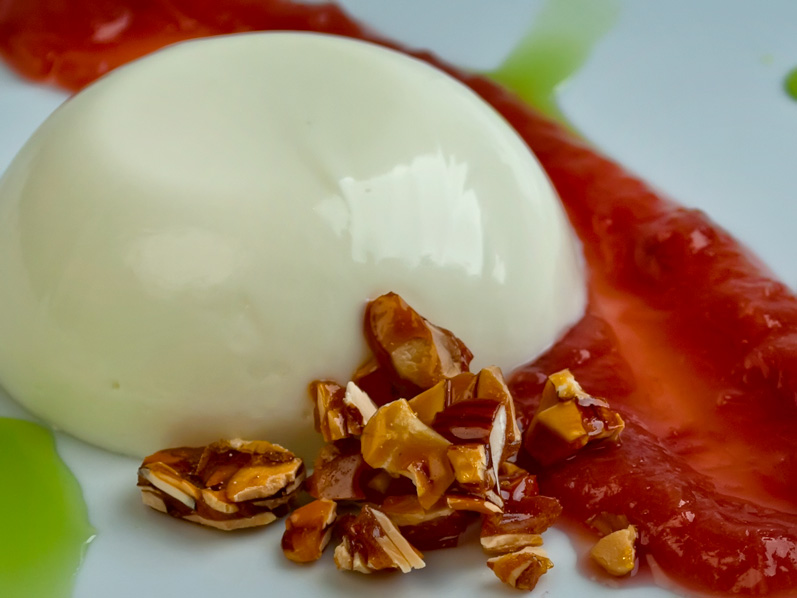
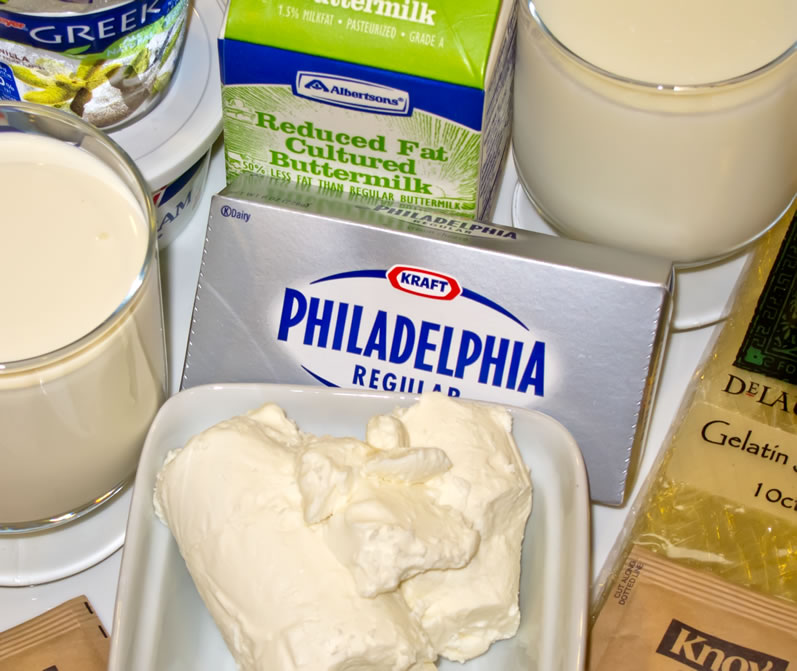
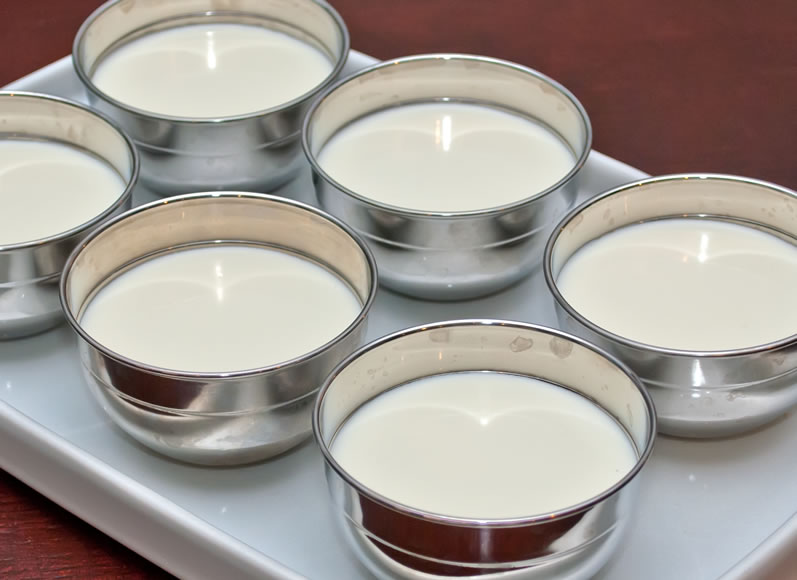
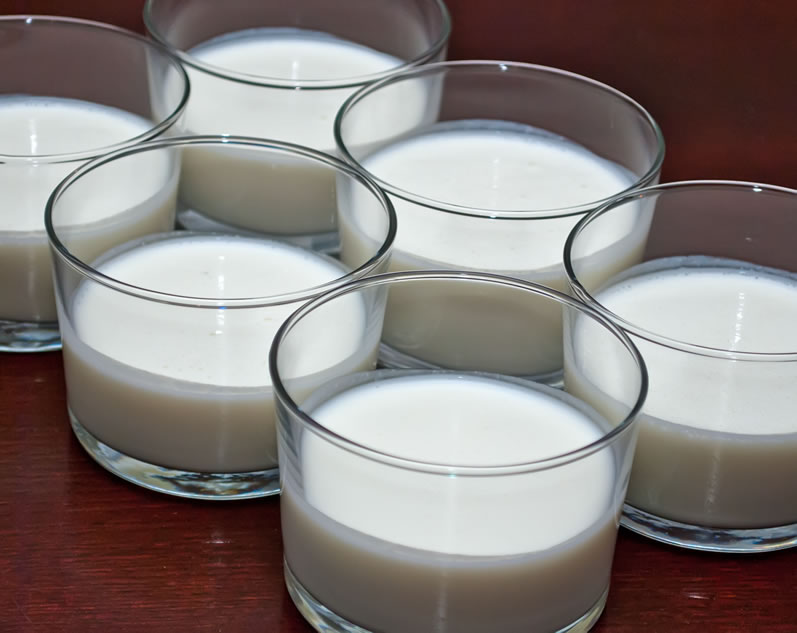
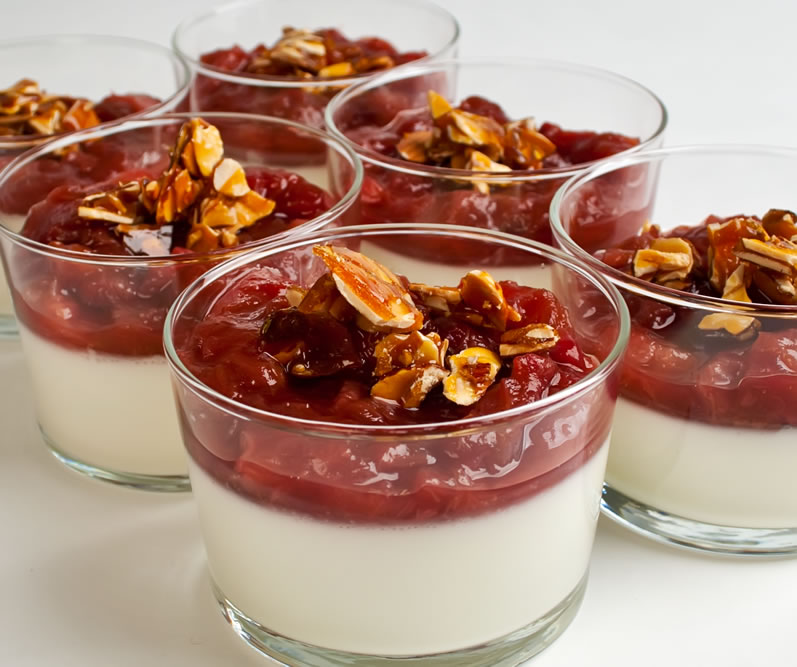
Thank you so much for the detailed instructions and tips!
I want to make a coconut cardamom panna cotta with a pistachio brittle or tuille as a dessert for an Indian dinner for 6.
What proportion of coconut milk (unsweetened?) to milk or cream(?) do you recommend?
Catpainter, you can simply swap the milk for unsweetened coconut milk. Hope this helps.
Hi!
I made Panna Cotta yesterday and it turned out a lil’ thick. Not jiggly at all. Almost a thick cream cheese type of texture. My ratio was 1 teaspoon gelatin to 1.58 cups of liquid (milk) because I cut my recipe in half to make a small batch. Any suggestions?
I cannot wait togive your tips a try. This is my daughter’s favorite dessert!
I love panna cotta, it’s perfect for a light dessert during the spring and summer.
I love panna cotta and am fascinated to read all the variations and your tips (had no idea about the fruit and gelatin conflict; thank you!)
This is exactly what I need! I have yet to make a good panna cotta! Love this!
I’ve been a HUGE fan of making panna cotta at home for a few years now. It’s such a simple, luscious dessert that can be topped with just about anything! Plus,it’s gorgeous. Great post!!
Thanks for the tips on making panna cotta. I’ve been wanting to try making this dessert as I love flan. It doesn’t seem that difficult and will keep your pointers in mind when I make my first batch.
This is one dessert I have never made before but have always been curious. Love the information you provide, and I am excited to give it a shot!
Hi there. I have searched for pannacotta moulds like the ones featured with no success. Do you know where I could obtain some? Thank you
Susan, as I recall, I found those on a fluke somewhere odd like Ross or Marshalls. I’ll keep my eyes open for them and get back to you if I see something like them. They really are great for panna cotta, but of course you could use Pyrex custard cups too.
A late arrival to this blog, but I was given 50 sheets of leaf gelatine, and I want to make pukka panna cotta, and came across your blog.
Just wanted to say thanks for the clear and thorough instructions and photos!
(and, if you’re still around, is there a standard sub of powdered vs leaf gelatine?)
Cat, this is difficult to answer because it depends on the strength and size of your gelatin sheets. You may have to experiment to get the correct ratio. One envelope of gelatin typically equals 3-5 sheets. Try 3 1/2, 3- x 5-inch, sheets. Hope this helps.
Thanks, Susan: I ended up soaking two sheets, and stirring them into 2 C whipping cream and 2 C buttermilk, and 1/2 C of fine sugar and a little dash of vanilla, and I was very pleased with the consistsency once I turned it out (sherry glasses give a lovely bobbly shape!); it was smooth, but not jelly-fied, if that makes sense, and there was no gelatine flavour at all.
Cat, that sounds perfect. There should be no perceptible taste or texture of gelatin. That’s what so special about properly made panna cotta. Love your idea with the sherry glasses.
As somebody who pays a great deal of attention to this type of stuff, I will verify this page is absolutely spot on.
Thank you, Wendi.
OMG! This is awesome. Thank you so much for writing this article, you should totally submit this to other blogs/online food mags because it is sooooo helpful. I’m going to use it to create a hibiscus rose panna cotta. I might even add ginger to the mix. Thanks again!
FoodCoach, so glad you found this post useful. Hibiscus Rose Petta Panna Cotta sounds fabulous. Save me some, ok?
Thank you for this extraordinary treatise. I appreciate your providing references and credits to others and look forward to trying out your master recipe. Question: would you please share the source for the stainless steel molds shown above? I was guessing either restaurant supply or thali dishes…. (Pippi Longstocking forever!)
Robin, thank you! Yes, I found those metal molds in a restaurant supply store long ago. If I see them again somewhwere, I’ll let you know.
Yes, I found those metal molds in a restaurant supply store long ago. If I see them again somewhwere, I’ll let you know.